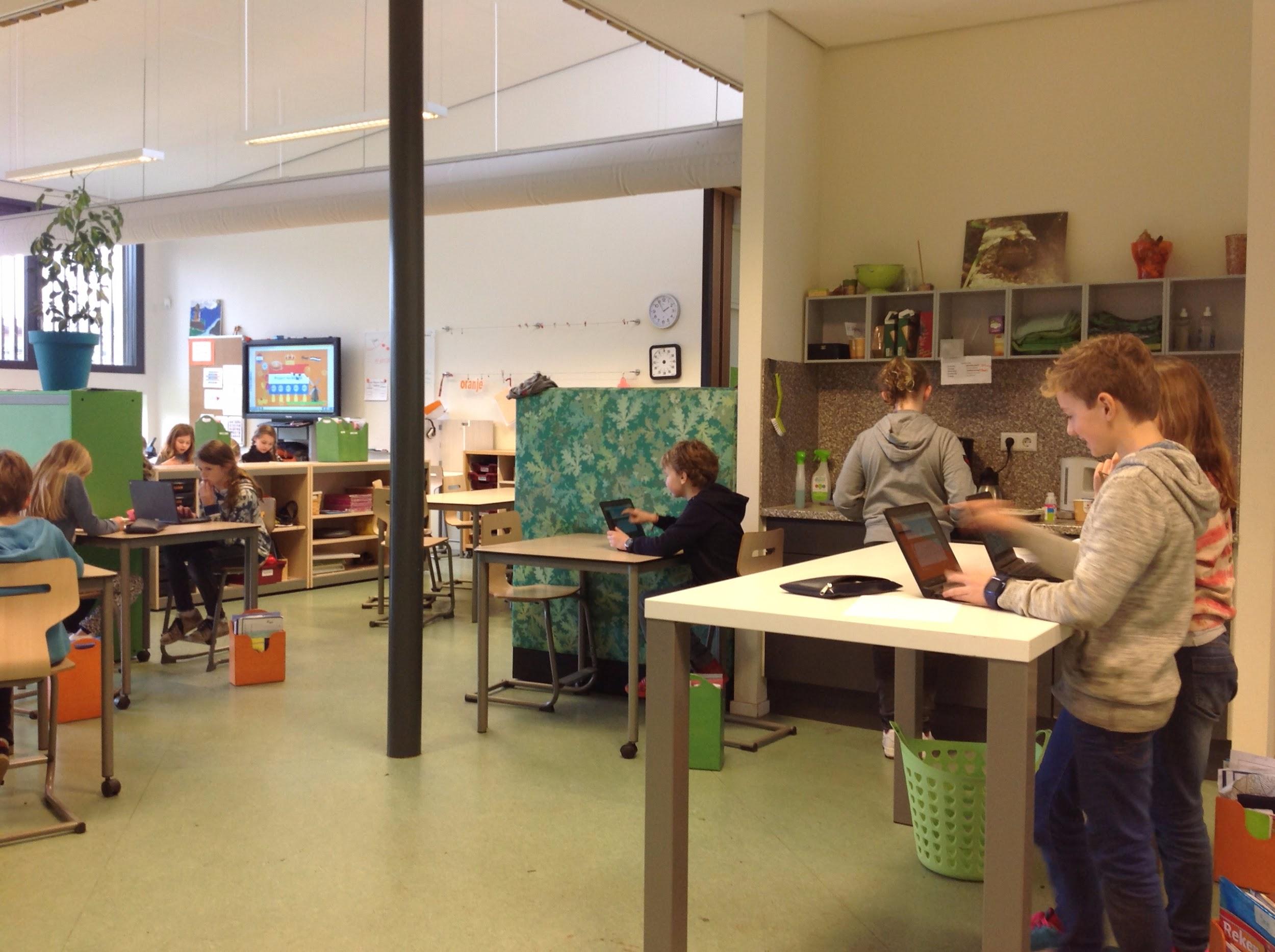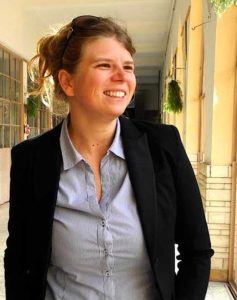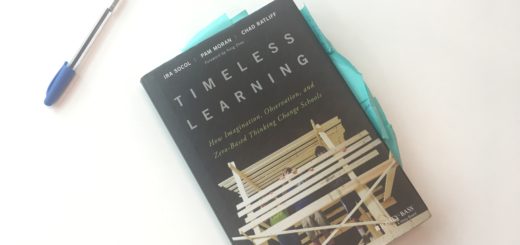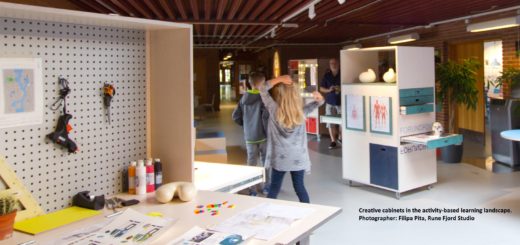Spaces linked to activities or assigned to groups of people?

This guest post by Mie Guldbaek Broens (Loop.bz) is the first in a series of guest posts by researchers who presented at the recent Transitions Europe and North America events.
Mie Guldbaek Broens was educated as a teacher and has an MA (Ed) in Educational Anthropology. The past 7 years she has been studying physical spaces and social behaviour, mainly in educational environments. She has done in depth research on teachers’ collaboration and the relationship with the physical space. This has led her to do studies on acoustic environments with a focus on 21st Century learning. She studies schools on a more general level by visiting schools all over the world looking at their spaces and pedagogical approaches.

I am investigating the close connection between teachers’ movements in the learning space and collaboration.
Teacher collaboration is important because it is closely linked to the development of teacher professionalism and their job satisfaction (OECD, 2016). However it is rare to see in typical educational environments (Schleicher, 2016: 29) where the physical environment is a nuisance if teachers are to engage in developing and executing student activities together.
In a classroom environment there is limited movement, teachers are most often alone with (the responsibility for) a group of students and have to move to another classroom if they want to talk to a colleague. There is no collaborative value associated with teachers’ transport between learning spaces. However, in my ethnographic study I found that the teachers’ movements within a learningspace supported their collaboration and made it more natural for them to engage in executing joint learning activities. Teachers who daily move around in a space together and amongst each other are more likely to collaborate because they observe each other work and can talk about their practices.
I argue that physical diversity within a larger space is more beneficial for teacher collaboration than a flexible space because it is moving and communicating amongst each other that enables development, not moving the furniture around.
I research spaces which are arranged for activities rather than groupings of people. I call this type of design for activity based floorplanning. When spaces are set up to first and foremost cater for activities and not allocated to groups of people, there is a good chance that they will become like the living room and kitchen in our homes that the whole family feel entitled to use and responsibility to keep. Different spaces cater for different forms of behaviour and activities and the users will have to communicate about how and when to use them. Hopefully they will agree on when and what to watch on the screen and what to do in the kitchen, makerspace etc.
Most teacher practices are connected to a spatial understanding, which is influenced by the long history of dividing students into groups or classes. My studies show how teachers unknowingly and against their pedagogical intentions, are influenced by this history and tend to arrange flexible spaces so the furniture cater for groups rather than activities. This, in turn, influence which spaces the teachers and students feel comfortable using and thus what kind of activities they are able to do. When spaces are assigned to a group of people they become someone’s domain and others tend not to use them, even when they are empty. It’s kinda like being in your brothers room when you have a room of your own. Even if he has the better whatever, it is easier to stay and use your own. To be honest, you don’t really like it when he comes in and uses your stuff either (he better put everything back in the right places).
For more information, see Mie’s presentation at Transitions Australasia 2017 here, follow her on twitter.com/LOOPbz and visit her website www.LOOP.bz to see pictures from schools she has visited around the world.
References
OECD (2016) Supporting Teacher Professionalism: Insights from TALIS 2013, TALIS, OECD Publishing, Paris. DOI: 10.1787/9789264248601-en
Schleicher, Andreas (2016) Learning environments as a third teacher. http://pubdocs.worldbank.org/en/997521458819730105/7-Linkages-of-the-innovative-learning-A-Schleicher-eng.pdf



